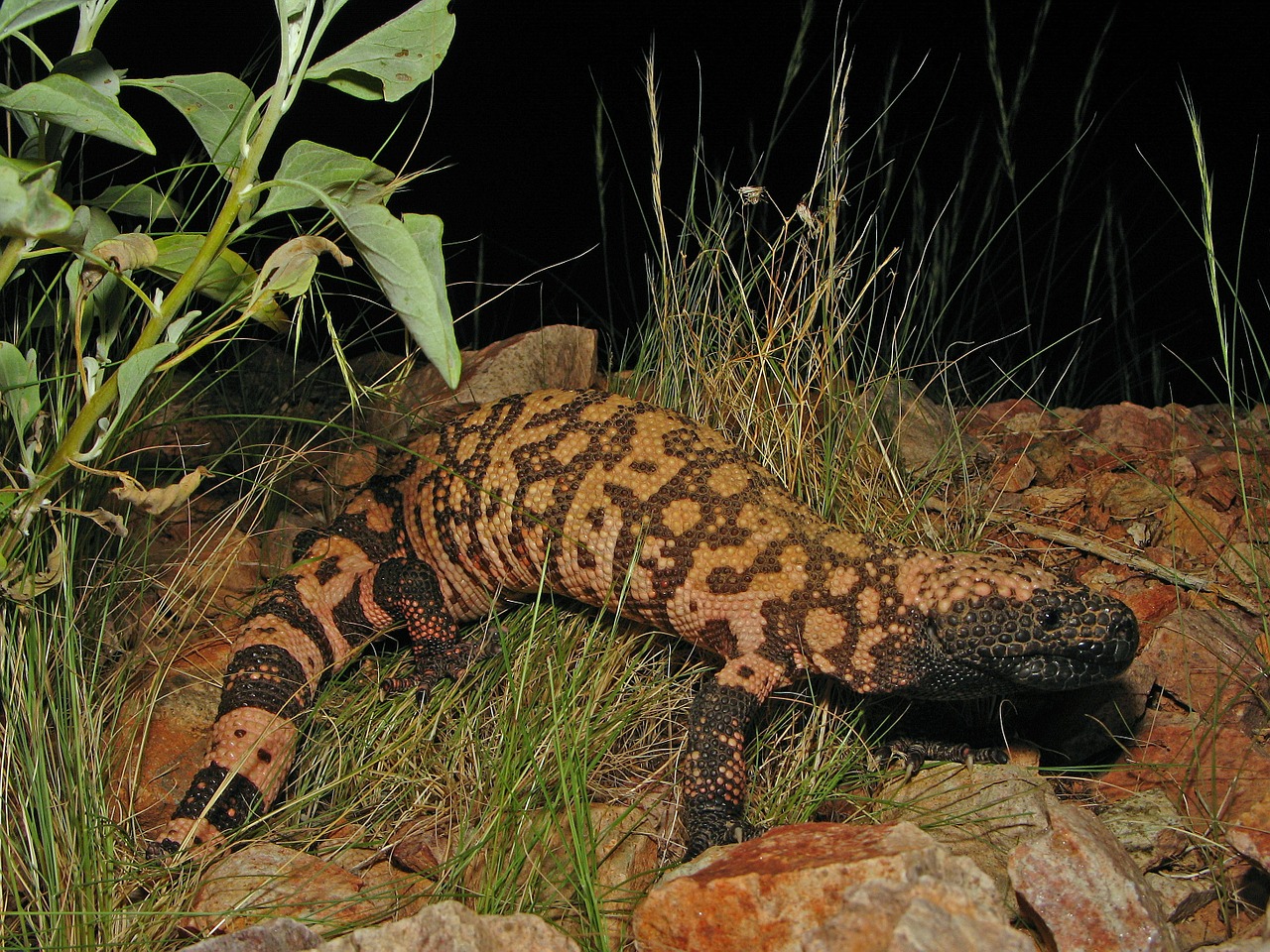Scientific classification: The Gila monster belongs to the family Helodermatidae. It is classified as Heloderma suspectum.
Introduction
The Gila Monster is the common name for the largest lizard in the United States, the only poisonous lizard in the United States and one of the only two poisonous lizards known in the world that are specialized to give a poisonous bite, gila monster facts. The Gila monster is heavily built and moves slowly on four short legs, dragging a thick, short, blunt tail. Fat is stored in the tail, and the lizard can live for months on this reserve.
Characteristics
Gila monsters eat mostly small rodents, juvenile birds, and bird and reptile eggs. In captivity, the lizards have shown a fondness for chicken eggs or dead white mice. Gila-monster eggs are leathery-shelled and about the size of hen eggs. Females lay about a dozen eggs in a wide hole in moist sand, cover them, and then abandon them. The young hatch in about 10 months.Gila monsters bite and then hang on strongly. The poison, used mainly as a defense, is secreted by glands in the lower jaw and flows out along grooves on the teeth of the lower and upper jaws. Although the bite can be a threat to human beings, the poisoning of humans by Gila monsters is rare and usually the result of careless handling, gila monster facts. The beaded lizard, a closely related species found in Mexico and Guatemala, has a similar kind of poisonous bite. Recent studies show that a number of types of lizards also have venom-secreting glands in their mouths, but lack the specialized teeth and large quantities of poison that the Gila monster and the beaded lizard have.
Habitat
Lizards are found in tropical and subtropical regions throughout the world; few species are found in temperate regions and none in arctic areas like in desert areas of Arizona, Nevada, Utah, and New Mexico and in northwestern Mexico. Some are burrowing or terrestrial animals; gila monster facts some, arboreal, and others, semiaquatic. Iguanas are found in all three types of habitats.
Conservation
In the United States, the Gila monster is protected by federal and state laws. A number of species are threatened by encroachment on their habitat, and the largest living lizard, the Komodo dragon, is on the endangered species list.

